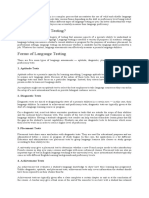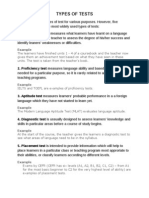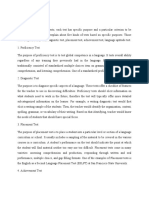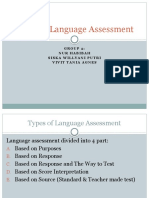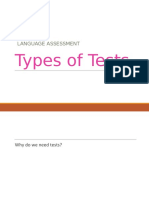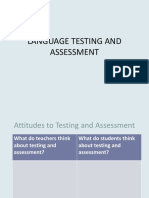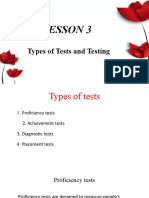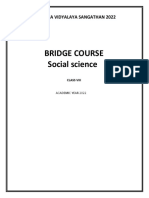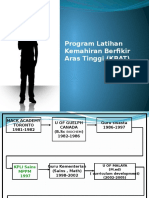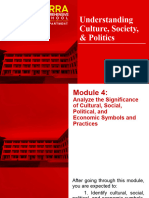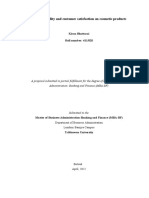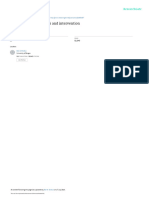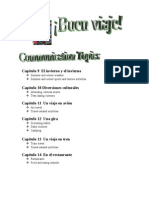0% found this document useful (0 votes)
179 views8 pagesL5. Types of Language Testing
The document discusses various types of language testing, including norm-referenced, criterion-referenced, proficiency, achievement, diagnostic, placement, and aptitude tests, each serving different purposes in assessing language skills. Norm-referenced tests compare individual performance to peers, while criterion-referenced tests measure against predetermined criteria. Proficiency tests evaluate overall language ability, achievement tests assess knowledge within a curriculum, diagnostic tests identify areas needing improvement, placement tests determine appropriate course levels, and aptitude tests gauge potential for language learning.
Uploaded by
uw-21-eng-bs-001Copyright
© © All Rights Reserved
We take content rights seriously. If you suspect this is your content, claim it here.
Available Formats
Download as PDF, TXT or read online on Scribd
0% found this document useful (0 votes)
179 views8 pagesL5. Types of Language Testing
The document discusses various types of language testing, including norm-referenced, criterion-referenced, proficiency, achievement, diagnostic, placement, and aptitude tests, each serving different purposes in assessing language skills. Norm-referenced tests compare individual performance to peers, while criterion-referenced tests measure against predetermined criteria. Proficiency tests evaluate overall language ability, achievement tests assess knowledge within a curriculum, diagnostic tests identify areas needing improvement, placement tests determine appropriate course levels, and aptitude tests gauge potential for language learning.
Uploaded by
uw-21-eng-bs-001Copyright
© © All Rights Reserved
We take content rights seriously. If you suspect this is your content, claim it here.
Available Formats
Download as PDF, TXT or read online on Scribd
/ 8

